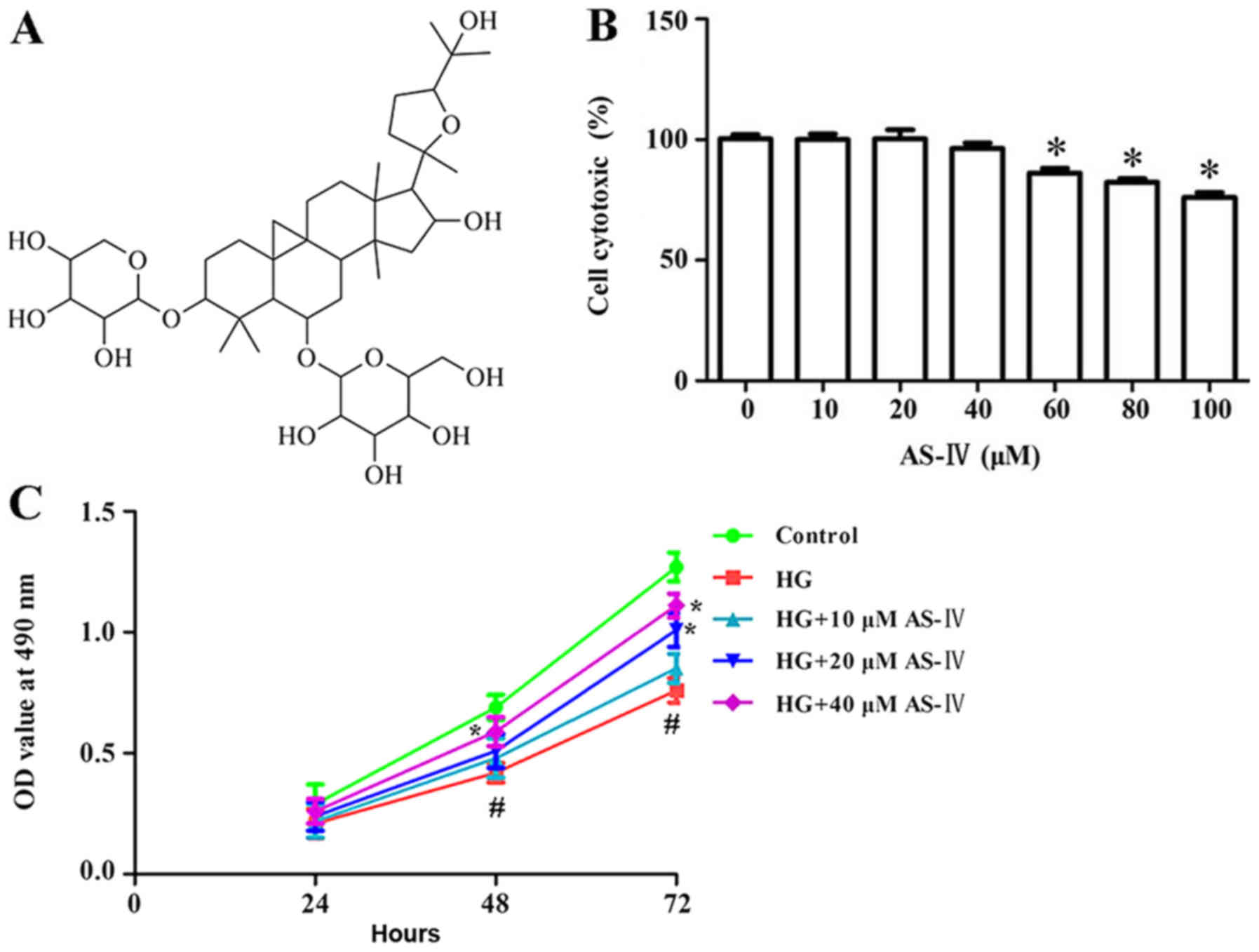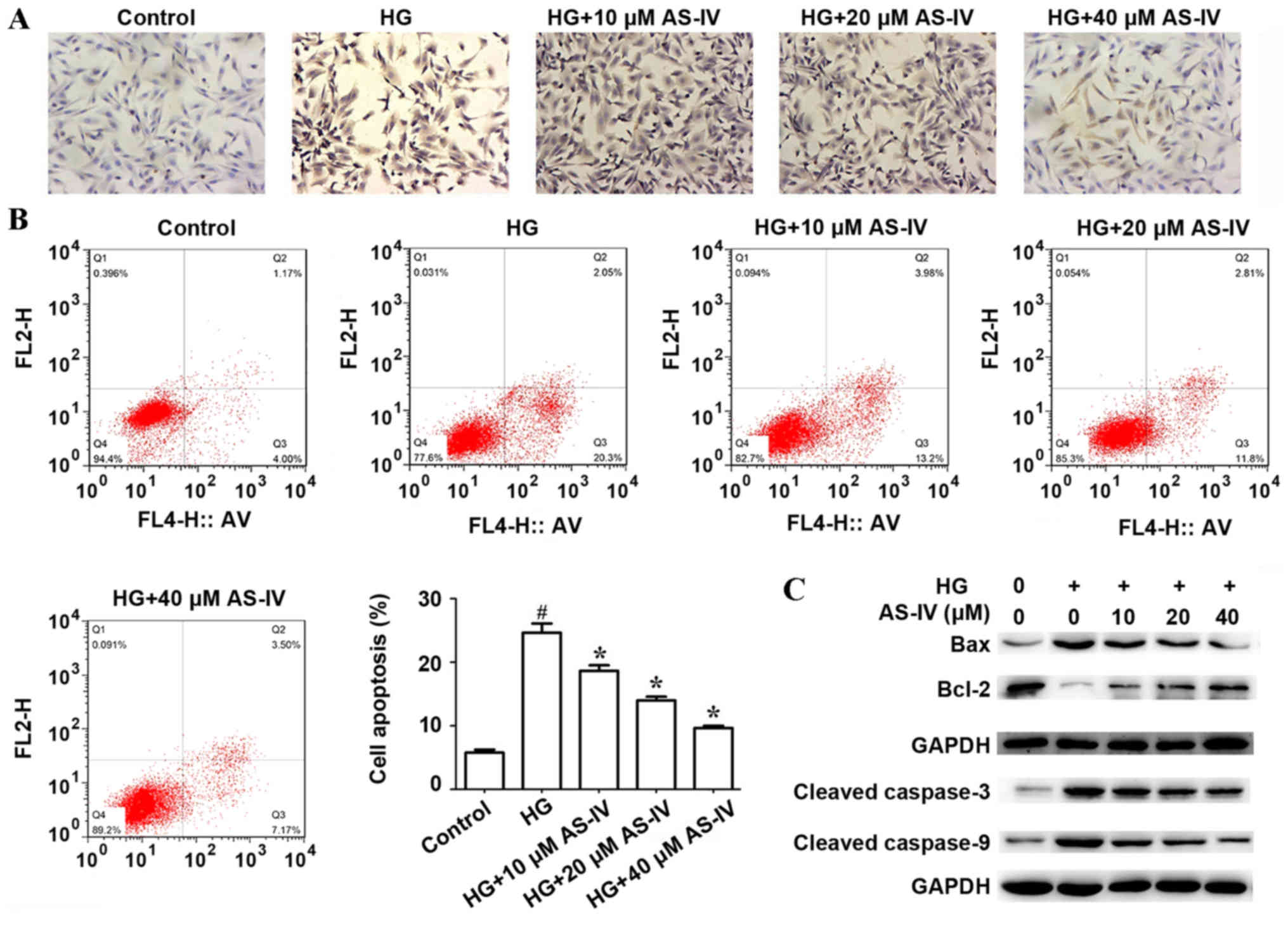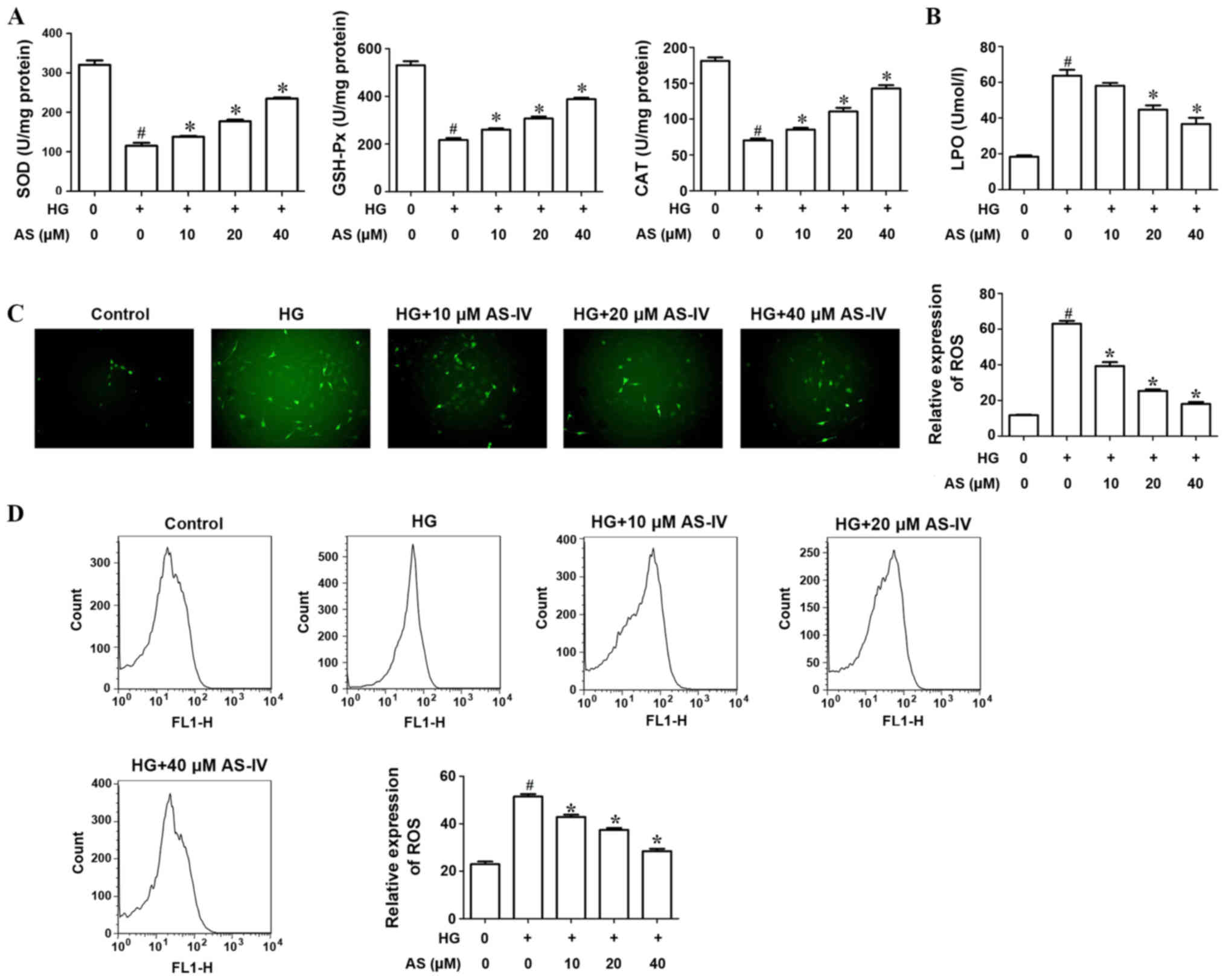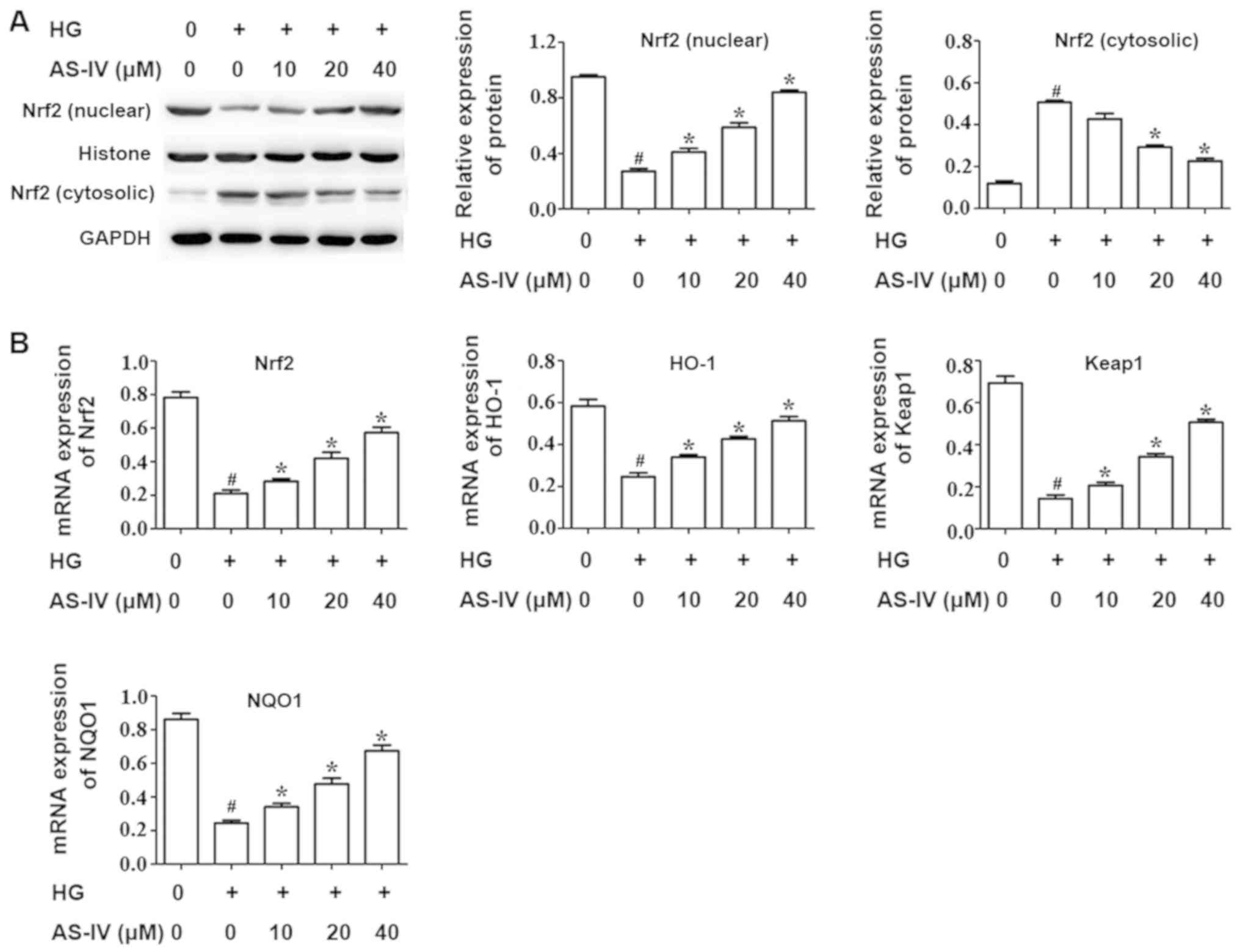|
1
|
Bagby SP: Diabetic nephropathy and
proximal tubule ROS: Challenging our glomerulocentricity. Kidney
Int. 71:1199–1202. 2007. View Article : Google Scholar : PubMed/NCBI
|
|
2
|
Singh DK, Winocour P and Farrington K:
Mechanisms of disease: The hypoxic tubular hypothesis of diabetic
nephropathy. Nat Clin Pract Nephrol. 4:216–226. 2008. View Article : Google Scholar : PubMed/NCBI
|
|
3
|
Hovind P, Rossing P, Tarnow L, Smidt UM
and Parving HH: Progression of diabetic nephropathy. Kidney Int.
59:702–709. 2001. View Article : Google Scholar : PubMed/NCBI
|
|
4
|
Hovind P, Tarnow L, Rossing K, Rossing P,
Eising S, Larsen N, Binder C and Parving HH: Decreasing incidence
of severe diabetic microangiopathy in type 1 diabetes. Diabetes
Care. 26:1258–1264. 2003. View Article : Google Scholar : PubMed/NCBI
|
|
5
|
Balakumar P, Arora MK, Ganti SS, Reddy J
and Singh M: Recent advances in pharmacotherapy for diabetic
nephropathy: Current perspectives and future directions. Pharmacol
Res. 60:24–32. 2009. View Article : Google Scholar : PubMed/NCBI
|
|
6
|
Bălăşescu E, Cioplea M, Brînzea A, Nedelcu
R, Zurac S and Ion DA: Immunohistochemical aspects of cell death in
diabetic nephropathy. Rom J Intern Med. 54:54–62. 2016.PubMed/NCBI
|
|
7
|
Kumar D, Robertson S and Burns KD:
Evidence of apoptosis in human diabetic kidney. Mol Cell Biochem.
259:67–70. 2004. View Article : Google Scholar : PubMed/NCBI
|
|
8
|
Yu T, Sheu SS, Robotham JL and Yoon Y:
Mitochondrial fission mediates high glucose-induced cell death
through elevated production of reactive oxygen species. Cardiovasc
Res. 79:341–351. 2008. View Article : Google Scholar : PubMed/NCBI
|
|
9
|
Taneda S, Honda K, Tomidokoro K, Uto K,
Nitta K and Oda H: Eicosapentaenoic acid restores diabetic tubular
injury through regulating oxidative stress and mitochondrial
apoptosis. Am J Physiol Renal Physiol. 299:F1451–F1461. 2010.
View Article : Google Scholar : PubMed/NCBI
|
|
10
|
Kamijo-Ikemori A, Sugaya T, Matsui K,
Yokoyama T and Kimura K: Roles of human liver type fatty acid
binding protein in kidney disease clarified using hL-FABP
chromosomal transgenic mice. Nephrol (Carlton). 16:539–544. 2011.
View Article : Google Scholar
|
|
11
|
Ito H, Yamashita H, Nakashima M, Takaki A,
Yukawa C, Matsumoto S, Omoto T, Shinozaki M, Nishio S, Abe M, et
al: Current metabolic status affects urinary liver-type fatty-acid
binding protein in normoalbuminuric patients with type 2 diabetes.
J Clin Med Res. 9:366–373. 2017. View Article : Google Scholar : PubMed/NCBI
|
|
12
|
Yang J, Choi HM, Seo MY, Lee JY, Kim K,
Jun H, Jung CW, Park KT, Kim MG, Jo SK, et al: Urine liver-type
fatty acidbinding protein predicts graft outcome up to 2 years
after kidney transplantation. Transplant Proc. 46:376–380. 2014.
View Article : Google Scholar : PubMed/NCBI
|
|
13
|
Parr SK, Clark AJ, Bian A, Shintani AK,
Wickersham NE, Ware LB, Ikizler TA and Siew ED: Urinary L-FABP
predicts poor outcomes in critically ill patients with early acute
kidney injury. Kidney Int. 87:640–648. 2015. View Article : Google Scholar : PubMed/NCBI
|
|
14
|
Xu Y, Xie Y, Shao X, Ni Z and Mou S:
L-FABP: A novel biomarker of kidney disease. Clin Chim Acta.
445:85–90. 2015. View Article : Google Scholar : PubMed/NCBI
|
|
15
|
Liu X, Wang W, Song G, Wei X, Zeng Y, Han
P, Wang D, Shao M, Wu J, Sun H, et al: Astragaloside IV ameliorates
diabetic nephropathy by modulating the mitochondrial quality
control network. PLoS One. 12:e01825582017. View Article : Google Scholar : PubMed/NCBI
|
|
16
|
Chu C, Qi LW, Liu EH, Li B, Gao W and Li
P: Radix astragali (Astragalus): Latest advancements and
trends in chemistry, analysis, pharmacology and pharmacokinetics.
Curr Org Chem. 14:1792–1807. 2010. View Article : Google Scholar
|
|
17
|
Zhou W, Chen Y and Zhang X: Astragaloside
IV alleviates lipopolysaccharide-induced acute kidney injury
through down-regulating cytokines, CCR5 and p-ERK, and elevating
anti-oxidative ability. Med Sci Monit. 23:1413–1420. 2017.
View Article : Google Scholar : PubMed/NCBI
|
|
18
|
Gui D, Huang J, Guo Y, Chen J, Chen Y,
Xiao W, Liu X and Wang N: Astragaloside IV ameliorates renal injury
in streptozotocin-induced diabetic rats through inhibiting
NF-κB-mediated inflammatory genes expression. Cytokine. 61:970–977.
2013. View Article : Google Scholar : PubMed/NCBI
|
|
19
|
Zheng R, Deng YY, Chen YP, Fan JM, Zhang
MH, Zhong YF, Zhu R and Wang L: Astragaloside IV attenuates
complement membranous attack complex induced podocyte injury
through the MAPK pathway. Phytother Res. 26:892–898. 2012.
View Article : Google Scholar : PubMed/NCBI
|
|
20
|
Livak KJ and Schmittgen TD: Analysis of
relative gene expression data using real-time quantitative PCR and
the 2(-Delta Delta C(T)) method. Methods. 25:402–408. 2001.
View Article : Google Scholar : PubMed/NCBI
|
|
21
|
Griffin BR, Faubel S and Edelstein CL:
Biomarkers of drug-induced kidney toxicity. Ther Drug Monit.
41:213–226. 2019. View Article : Google Scholar : PubMed/NCBI
|
|
22
|
Chen XY, Li R and Geng ZY: Cold stress
initiates the Nrf2/UGT1A1/L-FABP signaling pathway in chickens.
Poult Sci. 94:2597–603. 2015. View Article : Google Scholar : PubMed/NCBI
|
|
23
|
Afkarian M, Sachs MC, Kestenbaum B, Hirsch
IB, Tuttle KR, Himmelfarb J and de Boer IH: Kidney disease and
increased mortality risk in type 2 diabetes. J Am Soc Nephrol.
24:302–308. 2013. View Article : Google Scholar : PubMed/NCBI
|
|
24
|
Forbes JM and Cooper ME: Oxidative stress
as a major culprit in kidney disease in diabetes. Diabetes.
57:1446–1454. 2008. View Article : Google Scholar : PubMed/NCBI
|
|
25
|
Piwkowska A, Rogacka D, Audzeyenka I,
Jankowski M and Angielski S: High glucose concentration affects the
oxidant-antioxidant balance in cultured mouse podocytes. J Cell
Biochem. 112:1661–1672. 2011. View Article : Google Scholar : PubMed/NCBI
|
|
26
|
Tkachev VO, Menshchikova EB and Zenkov NK:
Mechanism of the Nrf2/Keap1/ARE signaling system. Biochemistry
(Mosc). 76:407–422. 2011. View Article : Google Scholar : PubMed/NCBI
|
|
27
|
He T, Guan X, Wang S, Xiao T, Yang K, Xu
X, Wang J and Zhao J: Resveratrol prevents high glucose-induced
epithelial-mesenchymal transition in renal tubular epithelial cells
by inhibiting NADPH oxidase/ROS/ERK pathway. Mol Cell Endocrinol.
402:13–20. 2015. View Article : Google Scholar : PubMed/NCBI
|
|
28
|
Zhang Y, Fan L, Li H, Wang X, Xu W, Chu K
and Lin Y: Gualou Guizhi granule protects against oxidative injury
by activating Nrf2/ARE pathway in rats and PC12 cells. Neurochem
Res. 43:1003–1009. 2018. View Article : Google Scholar : PubMed/NCBI
|
|
29
|
Sun T, Yu HY, Zhang CL, Zhu TN and Huang
SH: Respiratory syncytial virus infection up-regulates TLR7
expression by inducing oxidative stress via the Nrf2/ARE pathway in
A549 cells. Arch Virol. 163:1209–1217. 2018. View Article : Google Scholar : PubMed/NCBI
|
|
30
|
Hu R, Saw CL, Yu R and Kong AT: Regulation
of Nrf2 signaling for cancer chemoprevention: Antioxidant coupled
with antiinflammatory. Antioxid Redox Signal. 13:1679–1698. 2010.
View Article : Google Scholar : PubMed/NCBI
|
|
31
|
Baird L and Dinkova Kostova AT: The
cytoprotective role of the Keapl-Nrf2 pathway. Arch Toxicol.
85:241–272. 2011. View Article : Google Scholar : PubMed/NCBI
|
|
32
|
Liu W, Wang HX, Wang LK, Saw Constance LL
and Luo C: COX-2 and Nrf2/ARE signaling pathways in
anti-inflammation and antioxidation in vivo and in vitro. Chin Bul
Life Sci. 10:1027–1033. 2011.
|
|
33
|
Bordewick U, Heese M, Börchers T, Robenek
H and Spener F: Compartmentation of hepatic fatty-acid-binding
protein in liver cells and its effect on microsomal phosphatidic
acid biosynthesis. Biol Chem Hoppe Seyler. 370:229–238. 1989.
View Article : Google Scholar : PubMed/NCBI
|
|
34
|
Hisamichi M, Kamijo-Ikemori A, Sugaya T,
Hoshino S, Kimura K and Shibagaki Y: Role of bardoxolone methyl, a
nuclear factor erythroid 2-related factor 2 activator, in
aldosterone- and salt-induced renal injury. Hypertens Res. 41:8–17.
2018. View Article : Google Scholar : PubMed/NCBI
|



















